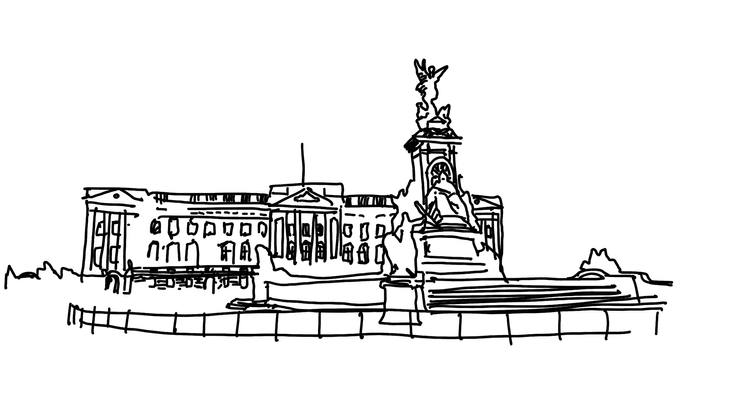My highest leverage productivity tactics
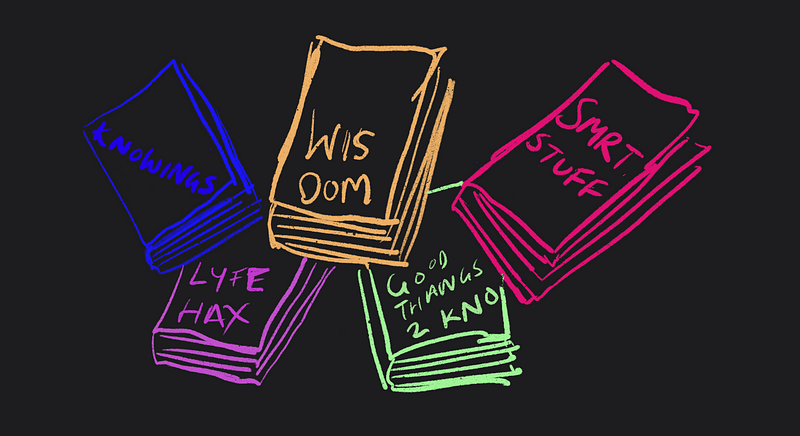
Over the past few months, I've churned through books about getting more out of your time each day. I’m spotlighting the ones that have worked for me best, and I’ve given them my own spin. Each section contains a source, with a full listing of the references at the bottom of the article.
Here are the 10 most rewarding practices for me:
1. Develop a personal operating system to make the highest use of your attention, and always be looking for ways to make that system better
Original sources: Personal introspection, Getting Things Done, Kaizen
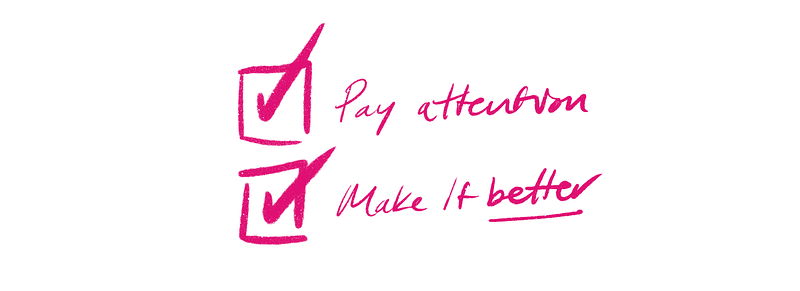
The key thing I’ve learned is that attention is the only real currency you have. These days, it seems like everyone is trying to take it from you, be it your coworkers, the TV, or social media companies who sell your attention to people who want you to buy things or ideas.
Your life is made up of the things you pay attention to. “Pay” signifying currency and scarcity. I’m trying to make a real effort to spend mine more intentionally. This is where a personal tracking system comes in handy.
Before I had such a system, the ever-present environmental chaos of my job, relationships, travel and adventure, and the general randomness in the world would constantly challenge my focus. It still does to some degree. I began to notice acutely after finishing school and entering working life that my fractured attention seriously diminished my ability to be present and happy. I learned that the unknown, the chaos, that came at me every day was significantly less scary when I had a model for confronting it. I also learned that having an intentional personal tracking system protects my attention, allowing me to focus. Getting Things Done (GTD) by David Allen, is such a system. Though, I’ve modified and adapted many of the processes to fit my own preference and style--more about that here. I continue to update it to make it more lightweight and easy to use.
The importance of continuous improvement for your personal system is that, as I’ve found, you’ll continue to stumble across better ideas as you go. Stuff that makes planning easier or faster. New technologies that can automate parts of your system. Never changing or updating your system also makes it feel stale. I like to experiment with new techniques (like an end-of-day “shutdown routine”) to see whether I should incorporate them. No system is perfect, but you can always seek a closer approximation to one that is ideal.
2. Don’t launch a frontal assault on your tendency to be lazy at a certain time of day, double-down on your naturally productive cycles
Original sources: Make Time tactic #14
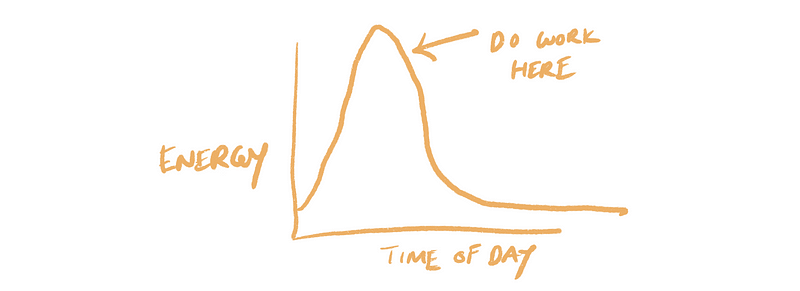
I’ve tried very hard to be productive after 7pm. I’ve attempted various conditioning approaches with myself, like an amateur B.F. Skinner. A beer if I read a chapter of a book. A movie if I write something. A video game if I code something up on my computer. All of these things were aimed at defeating my proclivities toward laziness after the workday. But whatever I did, I could not make myself feel good or energized to do creative or educational things at that time of day. I‘m usually just drained, and whatever output I do manage just isn’t quality.
In the mornings I’m filled with a creative energy that seems to wane by noon. After a recent a-ha moment, I realized there is a much higher probability I will accomplish something (and accomplish it well) if I move it to a morning task, rather than something to be done in the afternoon or evening. I’ve started going to bed earlier (9–9:30ish) and waking up way earlier (5:30–5:45ish) so I can move more things to my morning cycle.
3. There is unreal power in routine: Habits, exercise, and shutting down for the day
Source: Atomic Habits, personal introspection, Deep Work, Cal Newport blog, Make Time tactic #16
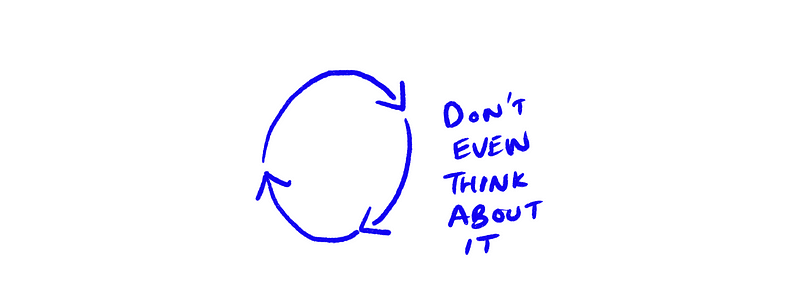
Habits conserve mental energy and create order out of chaos
I think the power of routine is in the fact that it’s automatic, mindless. You’re not expending energy planning what comes next, you just execute.
The other thing about my routine is that it provides for me a feeling of control to hedge against chaotic workdays. I’ve found this psychologically beneficial. It’s a structure I can cling to so that, even on days where the plan changes constantly, I know that I’m making progress against some of my goals, just by force of habit.
Exercise becomes effortless if it’s automatic, and it makes you perform better
There is an inordinate amount research showing that exercise is beneficial for many axes of your health: Memory, anxiety, heart health, etc. But for all of this, I still didn’t really care for a long time. Before mid-2018, exercise was something I had to psych myself up for. And when I couldn’t summon that motivation, I just wouldn’t do it. But, after committing to a morning routine, starting small, I made exercise mechanical, disconnected from motivation. I don’t even notice that I’m strapping on my running shoes.
After working my way up to it, I set a goal to run five miles every weekday morning, do 80+ pushups, lift some weights, meditate for 10+ mins, and block out an hour for reading or other self improvement (such as writing this article) prior to starting my actual work day. Doing these things reliably makes me feel better. I have more mental clarity and for longer.
I’ll often stop and realize that running every day tallies up to a lot in a few weeks, or that I’ve plowed through a bunch of books by reading lots of little bits. As an example, I’m ahead of pace to run 1,000 miles this year.
“Habits are the compound interest of self-improvement. The same way that money multiplies through compound interest, the effects of your habits multiply as you repeat them. They seem to make little difference on any given day and yet the impact they deliver over the months and years can be enormous. It is only when looking back two, five, or perhaps ten years later that the value of good habits and the cost of bad ones becomes strikingly apparent.”
— James Clear, “Atomic Habits”
Create and live by a shutdown routine
Speaking of routines like mine at the beginning of the day, creating an end-of-day shutdown procedure gives me a huge sense of confidence and eliminates a lot of vagueness about the next day.
I regularly run through these five steps at the end of my workday:
- Review this week’s goals and see whether I’m on track.
- Note down my thoughts in a journal entry.
- Review all of my personal and work project lists: Ensure that each one has a “next action” in the David Allen sense — “the most immediate physical, visible activity that would be required to move the situation toward closure.”
- Process my inboxes: Things, Mail, Slack, Messages. I look over these surfaces and either take action, defer an action to a later date, or delegate a response to someone more qualified to give one.
- Design my next day and block out 1.5–3 hours of uninterrupted time for one or two key tasks.
After this, barring emergencies, I try to completely disengage from work and transition to personal things. These strong barriers between work and personal life make me feel more relaxed.
4. Do fewer non-routine items in a day, ideally one or two big things
Original source: Make Time #55, Getting Things Done, GTD with Things 3
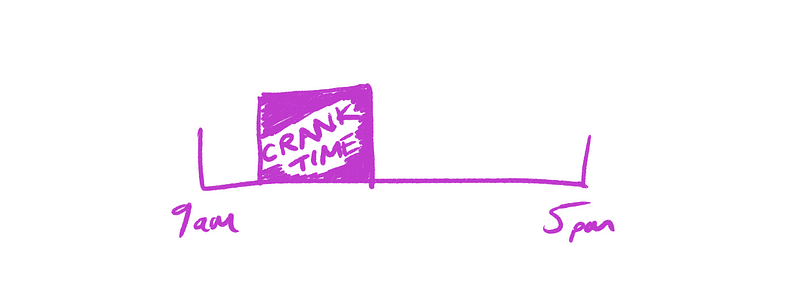
In Make Time, John Zeratsky and Jake Knapp argue for creating a “highlight” for your day and allocating at least 90 minutes to its completion. Here is a nice summary.
I’ve found this to be a very useful practice. Making myself accountable for fewer items in a given day makes my brain feel less cluttered. As above, I tweaked my system to plan the one or two big things I have to do the next day and block out time for them. This helps me buckle down and complete them, or at least make significant progress.
Planning out every minute of the day, for me, is unrealistic, possibly because of the nature of my job role, which involves a lot of coordination and talking to people. I can stick to one or two time boxes for cranking out work, but the rest of the day tends to reconfigure as it goes.
Because the day never stays well-behaved, and inputs, thoughts and realizations come constantly, I’ve been making lots of use the Inbox feature of Things, my to-do list app. An effective practice I’ve discovered is to mentally distinguish that queue from what you need to do today. I capture thoughts as they arise, but process all of these things during a separate time outside my dedicated task time boxes.
5. Shift your media consumption to align with your creative goals
Original source: Personal introspection, Make Time #25
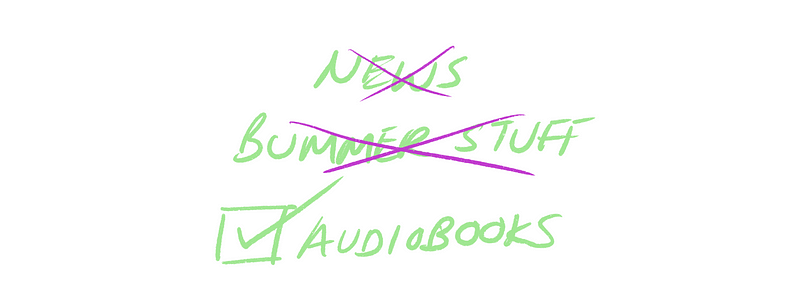
I’ve trimmed out all the stuff that bums me out: Namely, keeping up with politics, world news, and spectating the trollish gladiator fights going down on Twitter and Reddit (more about this in #9). I find that really important news gets to me reliably by word-of-mouth and there really is no necessity for me to be monitoring news apps. I’ve discovered that the headlines generally just make me feel powerless, angry, or sad.
Instead, I’ve been listening to podcasts and audiobooks done by people in my industry or in product management, specifically. People who provide immediately applicable insight. Previously, I thought that listening to podcasts or books about work on your personal time would be a good way to burn out, but it’s been just the opposite. I derive a lot of energy from listening to folks on the Y-Combinator podcast, or Intercom’s series on product, or Masters of Scale with Reid Hoffman. I spend such a vast quantity of my time on my work, so I find any optimizations I can make there have an outsize impact on my general satisfaction.
6. Meditate
Original source: Waking Up, Make Time #78

I’ve found this practice invaluable for settling into tasks. Actually doing work. Meditation helps you realize when you’re lost in thought and then return to the present. In a given 10-minute meditation session, I go through nearly endless cycles of this. Drifting, returning. Drifting, returning. But after a while, you begin to train your mind to drift less frequently. You stay present for longer.
But how to meditate? Sam Harris’ Waking Up course is dynamite. I tried Headspace before this, but I’ve found that Harris’ course is more rigorous and rewarding. He gets into advanced concepts pretty fast: Exploring the illusion of the “self,” “Metta” (a variant on traditional mindfulness meditation emphasizing love and kindness toward others), and imagining your conscious experience as separate from your body. All of this designed to make you more present, and help you control your attention.
7. Work from home at least twice a week
Original source: Remote, personal introspection
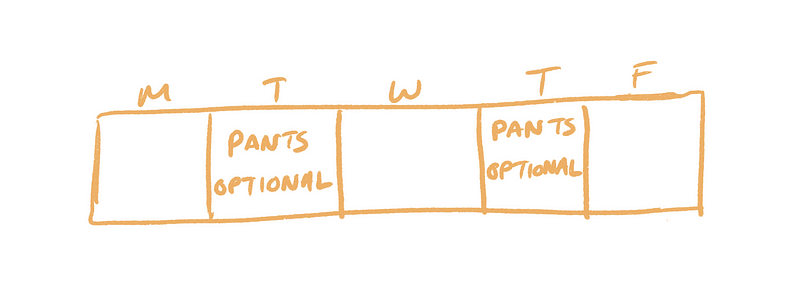
In Remote, Jason Fried and David Heinemeier Hansson argue vociferously against busy office culture.
“The ability to be alone with your thoughts is, in fact, one of the key advantages of working remotely. When you work on your own, far away from the buzzing swarm at headquarters, you can settle into your own productive zone. You can actually get work done — the same work that you couldn’t get done at work!”
— Jason Fried & David Heinemeier Hansson, “Remote”
The thing is, if you’re like most people and you work in a company where being in the office every day is expected, working remotely all the time is just not realistic for a couple primary reasons: Norms and communication culture.
Norms
To confront the being-in-the-office norm, the key is communicating the fact that you need to time to crank on projects to your key stakeholders, like your boss, and setting their expectations. If you frame working remotely as a method of achieving better results for the company, you likely won’t face much resistance. I recently sat down with my own manager in a one-to-one and was pleasantly surprised to find that, not only did he support my desire to work remotely more often, he actually asked if I needed the company to supply any equipment for a home office!
I would also moderate how frequently you work from home if you’re transitioning from being in the office five days per week to reduce the immediate impact on you and your colleagues. In the title of this tactic, I suggest working remotely “at least twice a week” to recognize this balance.
Communication culture
At my company, we’re still pretty quick to throw 30 mins down on the calendar to talk things out face-to-face. It feels more efficient than spending the time to think out responses to a long list of questions in an email. I’m certainly guilty of this sometimes.
My preference is for asynchronous communication, as below, but not everyone feels this way. So, rather than create conflict by declining all in-person meetings, I tend to show up in the office two to three days per week.
8. If you need information from other people, use thoughtful asynchronous communication before meetings
Original source: Rework, Deep Work
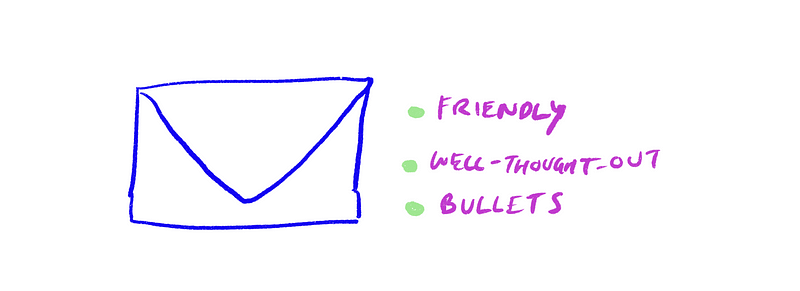
Trimming down your meeting schedule reduces interruption and increases information throughput between you and everyone else.
“The worst interruptions of all are meetings. Here’s why:
They’re usually about words and abstract concepts, not real things.
They usually convey an abysmally small amount of information per minute.
They drift off-subject easier than a Chicago cab in a snowstorm.
They require thorough preparation that most people don’t have time for.
They frequently have agendas so vague that nobody is really sure of the goal…”
— Jason Fried & David Heinemeier Hansson, “Rework”
There’s a trick to replacing meetings with written communication, and it’s in the way that you construct email or messaging dialogs. Cal Newport talks a lot about this in Deep Work. His advice is to do more work up front: If you’re planning to meet someone for coffee, pick the place and time and ask for a simple confirmation. Minimize the amount of back-and-forth from the outset and the amount of thinking the opposite party has to do.
Additionally, identify the specific questions and areas in which you require input, and call those out. I personally really like bullets and numbers in my emails, rather than blocky paragraphs, because bullets make each separate question or point more visually apparent and scannable.
9. Do not participate in social media platforms
Original source: Deep Work, Cal Newport blog, Make Time #17, Jaron Lanier
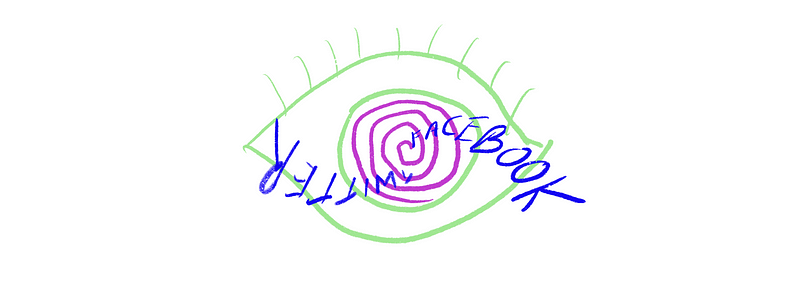
Eliminating distraction
This was one of the harder adjustments for me to make, but it’s a very critical one. I realized that Facebook, Twitter, Instagram, and Reddit tended to be very low value-add in the course of my week for all the time they would take (often without me noticing). Hours of social media browsing do not align with the goals I set out in my personal operating system.
Around the beginning of this year, I ceased to use the platforms and deleted all of the apps from my phone, though I haven’t yet actually deleted all my accounts. For me, I’ve found that not having the apps on my phone was enough to curtail my use. For other people, I realize this may not be the case.
Eliminating the subtle mind-control
I recently stumbled across Jaron Lanier, who’s writing shows how pernicious ad-based internet business models can be.
…So-called advertisers can seize the moment when you are perfectly primed and then influence you with messages that have worked on other people who share traits and situations with you.
I say “so-called” because it’s just not right to call direct manipulation of people advertising. Advertisers used to have a limited chance to make a pitch, and that pitch might have been sneaky or annoying, but it was fleeting. Furthermore, lots of people saw the same TV or print ad; it wasn’t adapted to individuals. The biggest difference was that you weren’t monitored and assessed all the time so that you could be fed dynamically optimized stimuli — whether “content” or ad — to engage and alter you.
Now everyone who is on social media is getting individualized, continuously adjusted stimuli, without a break, so long as they use their smartphones. What might once have been called advertising must now be understood as continuous behavior modification on a titanic scale.
— Jaron Lanier, “Ten Arguments for Deleting Your Social Media Account Right Now”
One of the portions of the book quoted above that particularly resonated with me was Lanier’s argument that Facebook and similar platforms make you sadder. Similar to the approach of newspapers (“if it bleeds, it leads”), the algorithms optimizing for your attention tend to bubble up content that elicits a powerful emotional response. Sadness or anger tend to be easier to conjure up than happiness, so you see more stuff that makes you sad.
Quitting Facebook, Twitter, Instagram (the canonical compare-your-life-to-other-people’s app), and Reddit (say the meanest things you can in the comments to score points) has made a noticeable impact on my everyday levels of happiness.
It may seem hypocritical to say all this and yet still use Medium, but I would argue Medium as a platform is different in three critical ways:
- I tend to use Medium for research and value-additive functionality and then I stop easily when I’ve found what I’m looking for. I never find myself aimlessly scrolling for hours on end.
- Medium deliberately does not subject you to the whims of unseen behavior manipulators who purchase advertising. They’ve chosen a paid subscription model.
- I don’t feel sad after reading articles on Medium, unless I purposely seek out sad material. (Maybe it’s simply not as easy to get sad when you’re just reading content about how to do your job better or get more things done in your day).
Of course, I still love to share thoughts and photos with friends and family, but I’ve just switched to using good ol’ fashioned iCloud photos and text messages to do it. It’s quick, easy, private, and there are no ads or algorithms controlling what I see.
10. During your lazy time, don’t rewatch movies or reread books
Original source: Personal introspection
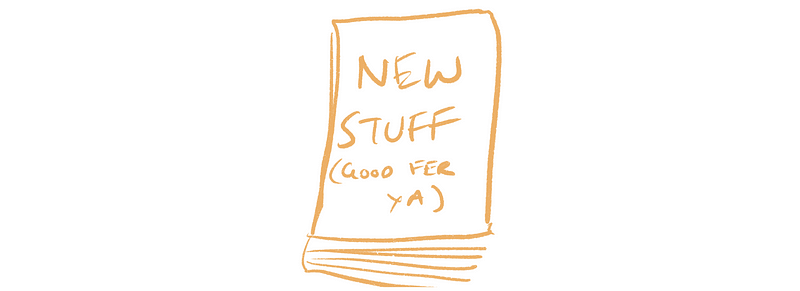
I have a tendency to rewatch movies like the Lord of the Rings far too often because it’s like comfort food when I’m feeling lazy or burnt out.
Substitute that movie time with something weird or new and you’ll thank yourself, because your wind-down time is also a form of routine. If you watch or consume bits of new content every night, while you’re in relaxation mode, you’ll gradually seed your brain with new thoughts which flow into your next day.
Read these books
Along with everything else, these books have been invaluable for me. All of the tactics that I’ve laid out above comprise the key wisdom that I’ve found within them.
I would highly suggest knocking out:
- Make Time, John Zeratsky & Jake Knapp
- Atomic Habits, James Clear
- Getting Things Done, David Allen
- GTD with Things 3, Eric A. Bowers
- Deep Work, Cal Newport
- Rework, Jason Fried & David Heinemeier Hansson
- Remote, Jason Fried & David Heinemeier Hansson
- Waking Up: A guide to spirituality without religion, Sam Harris
- Ten Arguments for Deleting Your Social Media Account Right Now, Jaron Lanier
